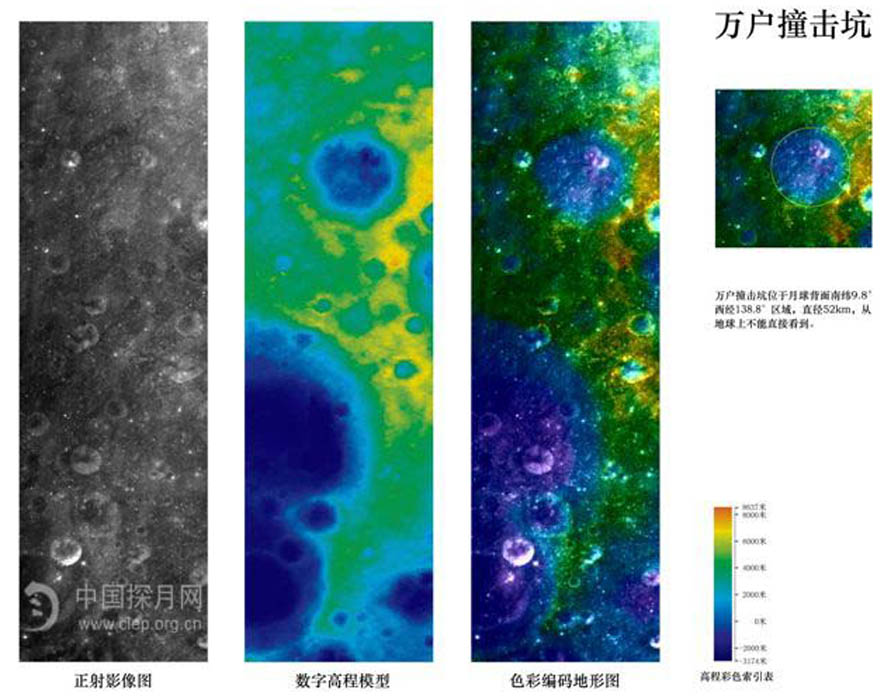
illustration from Chang’e
It should not be a surprise that one of the early examples of the success of the Chang’e lunar orbiter should be of the crater Wan-Hoo. One of only nine features with a Chinese name, there is, however, no evidence that Wan-Hoo ever existed. But the crater does. It is about 52 km wide and is located at 9.8°S and 138.8°W. A Lunar Orbiter image reveals the crater to be relatively old and pitted with small craters that may be ejecta from the Hertzsprung impact basin. The Chang’e illustation includes a black and white image strip about 250 km long, stretching from the totally inconspicuous Paschen crater at lower left to about 50 km north of Wan-Hoo at the top. The colored middle image is a topographic map (presumably derived from stereo), and the right image is a combination of the topo and the image. Unfortunately, the scale for the topography is too small for me to read with certainty but if the units are meters it appears that there is somewhat more than 10 km of elevation between the dark blue and the orange! Wan-Hoo appears to have about 8 km of relief between its floor and the high rim to the east. That depth can not be correct - based on its appearance in the Lunar Orbiter view I would expect it to be more like 1 to 2 km deep. The deep blue feature at bottom left is a combination of Paschen and Paschen M - its depth of 4 to 5 km also seems too deep. Have I grossly misunderstood this illustration or is it mis-calibrated?
Related Links
Clementine Atlas plate 88
Yesterday's LPOD: A Hidden Basin
Tomorrow's LPOD: The Pearl Necklace
COMMENTS?
Register, Log in, and join in the comments.



